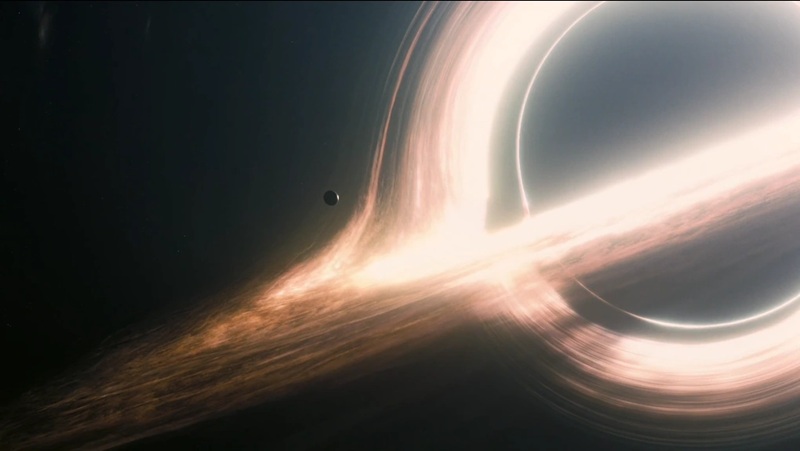Here's a brief history on our understanding of black holes. In 1783 John Michell had a thought. Now that in itself was not unusual, as Michell was a philosopher, and someone whose thoughts were purportedly generations ahead of his contemporaries. What was unusual was that Michell began to think about light and gravity in a way no one had before, and it led him to the conclusion that light could not escape from a sufficiently massive object due its gravity. Now if you don't quite get that, don't feel bad, because no one at the time, and for a long time after, really understood what he was talking about.
In fact, not much happened until 1915, when Einstein published his theory of general relativity. This is a theory that describes how mass bends space-time, and bends it enough as it turns out that if you are travelling close to something really massive, you could get stuck – a bit like being hopelessly trapped in a whirlpool in the ocean. This idea was developed further by other scientists looking at massive objects and their gravitational influence, but a good theory is nothing without a catchy name. Enter John Wheeler, who in 1964 coined the term black hole. Now we had a theory and a name.
Just a decade later the first bright source of X-rays, and a telltale sign of a black hole, was found. The object was named Cygnus X-1, and the X-rays were a consequence of the black hole devouring a companion star. Not everyone was convinced though. In 1974 Hawking bet Kip Thorne that Cygnus X-1 wouldn't turn out to be a black hole at all. It wasn't that Hawking didn't believe it was, it was more that if it turned out not to be, his many years of research devoted to black holes would have been a waste of time. And he would have lost a bet. By betting against it he was guaranteed a win either way. Hawking conceded the bet in 1990, and Thorne walked away with a one-year subscription to Penthouse magazine.
Now recent research has found that Cygnus X-1 is further away than we thought. Previous estimates were that it lay at a distance of around 6,000 ly, whereas the latest measurements have it at 7,200 ly. So what? Well, to be so bright at that extended distance, it must be bigger than we thought. About 21 times more massive than the Sun, if you want it in numbers. Bigger, in fact, than most of our current models would suggest is possible.

If you want to know what a black hole looks like (yes, they are black, but the warping of space-time around them and the accretion disk makes for a spectacle) take a look at Gargantua from Interstellar. That's the black hole near a water world, where time dilation means that space-time is warped so much that just an hour on the planet was the same as decades on Earth. Gargantua was rendered using computer effects based on physics equations developed by Kip Thorne. You can see the accretion disk as a glowing circle of light, warped by gravity and bent around the centre of black hole. The first photo we have of an actual black hole (in M87), taken years after the film was released, looks strikingly similar, albeit from a different angle.
Physics works.



